Related Research Articles

The clavichord is a stringed rectangular keyboard instrument that was used largely in the Late Middle Ages, through the Renaissance, Baroque and Classical eras. Historically, it was mostly used as a practice instrument and as an aid to composition, not being loud enough for larger performances. The clavichord produces sound by striking brass or iron strings with small metal blades called tangents. Vibrations are transmitted through the bridge(s) to the soundboard.
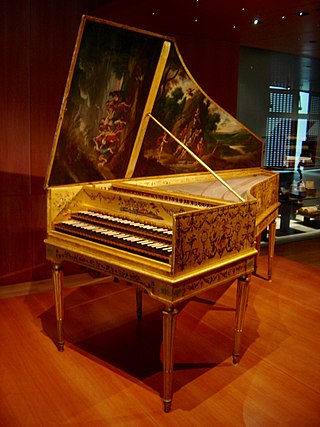
A harpsichord is a musical instrument played by means of a keyboard. This activates a row of levers that turn a trigger mechanism that plucks one or more strings with a small plectrum made from quill or plastic. The strings are under tension on a soundboard, which is mounted in a wooden case; the soundboard amplifies the vibrations from the strings so that the listeners can hear it. Like a pipe organ, a harpsichord may have more than one keyboard manual, and even a pedal board. Harpsichords may also have stop buttons which add or remove additional octaves. Some harpsichords may have a buff stop, which brings a strip of buff leather or other material in contact with the strings, muting their sound to simulate the sound of a plucked lute.
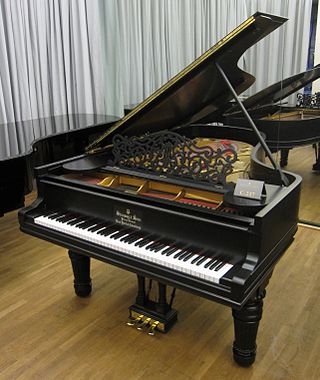
The piano is a keyboard instrument that produces sound when pressed on the keys. Most modern pianos have a row of 88 black and white keys: 52 white keys for the notes of the C major scale and 36 shorter black keys raised above the white keys and set further back, for sharps and flats. This means that the piano can play 88 different pitches, spanning a range of a bit over seven octaves. The black keys are for the "accidentals", which are needed to play in all twelve keys.

A keyboard instrument is a musical instrument played using a keyboard, a row of levers that are pressed by the fingers. The most common of these are the piano, organ, and various electronic keyboards, including synthesizers and digital pianos. Other keyboard instruments include celestas, which are struck idiophones operated by a keyboard, and carillons, which are usually housed in bell towers or belfries of churches or municipal buildings.

The National Music Museum: America's Shrine to Music & Center for Study of the History of Musical Instruments (NMM) is a musical instrument museum in Vermillion, South Dakota, United States. It was founded in 1973 on the campus of the University of South Dakota. The NMM is recognized as "A Landmark of American Music" by the National Music Council.
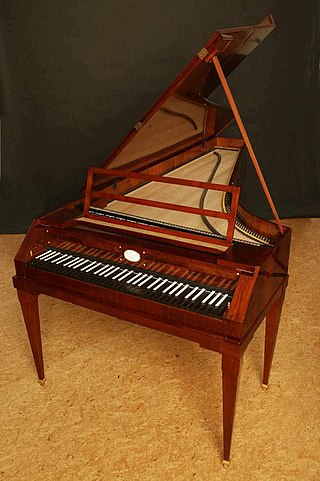
A fortepiano, sometimes referred to as a pianoforte, is an early piano. In principle, the word "fortepiano" can designate any piano dating from the invention of the instrument by Bartolomeo Cristofori in 1698 up to the early 19th century. Most typically, however, it is used to refer to the mid-18th to early-19th century instruments, for which composers of the Classical era, especially Haydn, Mozart, and the younger Beethoven and Hummel, wrote their piano music.
Ralph Leonard Kirkpatrick was an American harpsichordist and musicologist, widely known for his chronological catalog of Domenico Scarlatti's keyboard sonatas as well as for his performances and recordings.

Gustav Maria Leonhardt was a Dutch keyboardist, conductor, musicologist, teacher and editor. He was a leading figure in the historically informed performance movement to perform music on period instruments.

Johann (Georg) Andreas Stein was an outstanding German maker of keyboard instruments, a central figure in the history of the piano. He was primarily responsible for the design of the so-called German hammer action. Pianos with this hammer action, or its more developed form known as the Viennese action, may be said to be appropriate for the performance of the piano music of Haydn, Mozart, and the early Beethoven.

John Broadwood & Sons is an English piano manufacturer, founded in 1728 by Burkat Shudi and continued after his death in 1773 by John Broadwood.

Sébastien Érard was a French instrument maker of German origin who specialised in the production of pianos and harps, developing the capacities of both instruments and pioneering the modern piano.

Piano pedals are foot-operated levers at the base of a piano that change the instrument's sound in various ways. Modern pianos usually have three pedals, from left to right, the soft pedal, the sostenuto pedal, and the sustaining pedal. Some pianos omit the sostenuto pedal, or have a middle pedal with a different purpose such as a muting function also known as silent piano.

Finchcocks is an early Georgian manor house in Goudhurst, Kent. For 45 years it housed a large, visitor-friendly museum of historical keyboard instruments, displaying a collection of harpsichords, clavichords, fortepianos, square pianos, organs and other musical instruments. The museum was run by the owners of the house, Richard and Katrina Burnett. It is now owned by Neil and Harriet Nichols who use it as a family home and a venue for residential piano courses.

The harpsichord was an important keyboard instrument in Europe from the 15th through the 18th centuries, and as revived in the 20th, is widely played today.
Americus Backers, sometimes described as the father of the English grand pianoforte style, brought the hammer striking action for keyboard instruments from his master Gottfried Silbermann's workshop in Freiburg to England in the mid-18th century. Unlike the eleven other ex-apprentices of Silbermann who followed him to England and built square pianos with his action, Backers developed Silbermann's action into a reliable, powerful and responsive form that he built into a grand harpsichord case and added two tonal effects – una corda and damper lift – activated by pedals built into the dedicated trestle stand, again his original innovation. This new instrument altered the landscape of English music, causing composers and musicians to consign the plucked string harpsichord and its music to history. It is upon Americus's design that the modern grand pianoforte we know today is based.
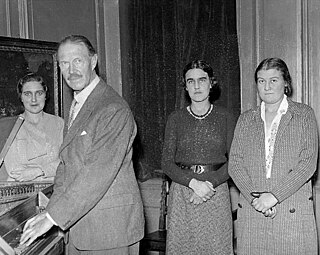
Major George Henry Benton Fletcher was a collector of early keyboard instruments including virginals, clavichords, harpsichords, spinets and early pianos. His collection is currently housed and kept in playing condition by the National Trust in Fenton House, a beautiful late 17th century merchant's house in, Hampstead, north London.
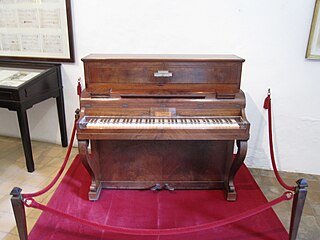
Pleyel et Cie. is a French piano manufacturing firm founded by the composer Ignace Pleyel in 1807. In 1815, Pleyel's son Camille joined him as a business partner. The firm provided pianos to Frédéric Chopin, who considered Pleyel pianos to be "non plus ultra". Pleyel et Cie. also operated a concert hall, the Salle Pleyel, where Chopin performed his first – and last – Paris concerts. Pleyel's major contribution to piano development was the first use of a metal frame in a piano. Pleyel pianos were the choice of composers such as Chopin, Debussy, Saint-Saëns, Ravel, de Falla and Stravinsky and of pianists and teachers Alfred Cortot, Philip Manuel and Gavin Williamson. 19th century musicians involved in the company's management included Joseph O'Kelly and Georges Pfeiffer.

Alfred James Hipkins was an English musician, musicologist and musical antiquary.
References
- 1 2 https://www.thecanterburyauctiongalleries.com/blog/the-colt-clavier-collection-an-introduction/ saved Jan 16 2019 https://web.archive.org/web/20190116102341/https://www.thecanterburyauctiongalleries.com/blog/the-colt-clavier-collection-an-introduction/
- 1 2 3 4 Ratcliffe, Ronald V. (March 1977). "A Keyboard Heaven". Clavier. 16 (3): 22–23.
- 1 2 3 4 5 6 7 8 9 10 11 12 13 14 15 Bray, David (October 1994). "The Colt Clavier Collection at 50 – A Collection in Distress?". Harpsichord and Fortepiano. Ruxbury Publications, Ltd. 5 (1): 30–33.
- 1 2 Clinkscale, Martha Novak (1999). Makers of the Piano: 1820–1860. Oxford University Press. p. 457. ISBN 9780198166252.
- ↑ Louchet, Jean (2010). The Keyboard Stringing Guide. p. 146. ISBN 9781445710334.
- 1 2 3 Walker, Graham (17 December 2013). "The Survival and Preservation of English Square Pianos". The Early Piano: Authentic Materials for Early Keyboard Instruments. Early Piano. Retrieved 27 April 2015.
- 1 2 Harris, Paul (2009). Malcolm Williamson: A Mischievous Muse. Omnibus Press. ISBN 9780857120465.
- ↑ Ripin, Edwin M. (1989). Early Keyboard Instruments. W. W. Norton & Company. p. 248. ISBN 9780393305159.
- 1 2 3 Smith, Ronald. Charles Valentin Alkan (LP Record). Ronald Smith. New York, NY: Musical Heritage Society. OR 174.
- ↑ Palmieri, Robert (2004). The Piano: An Encyclopedia. Routledge. p. 232. ISBN 9781135949648.
- 1 2 Colt, C. F. (March 1977). "From My Collection". Clavier. 16 (3): 23–25.
- ↑ "Rare piano auction hits right key". 23 June 2018.
- ↑ "Unique 18th century harpsichord at risk of export". UK Department for Digital, Culture, Media & Sport. 11 January 2019. Retrieved 17 January 2019.
 This article contains quotations from this source, which is available under the Open Government Licence v3.0. © Crown copyright.
This article contains quotations from this source, which is available under the Open Government Licence v3.0. © Crown copyright.